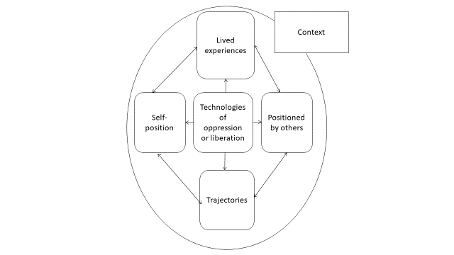The universities involved in this project represent a range of professional backgrounds including social work, pedagogy, youth studies and youth & community work and share a common commitment to social justice. This diverse range of professional experience has contributed to the development of the model. We captured the experiences to produce a model which critically engage with this combined inter-professional, interdisciplinary and transnational knowledge base. We have called this model or framework Equality Literacy (EQL).
‘Equalities Literacy’ refers to the ability to ‘read’ or have an awareness of equality, equity and associated social justice issues, to choose how to intervene, and to 'write' or act to create equality, equity and social justice through our daily actions. Inherent in these actions is the need to challenge meritocratic ideologies that perpetuate ´blame´ and competition (Wiederkehr et al., 2015) as these are both barriers to equality and equity. The Equalities Literacy Framework is a holistic model comprised of five elements:
- Lived experience of context
- Positioning by others –
- Technologies of oppression and liberation
- Positioning by self
- Trajectories

The framework enables students, practitioners, researchers, managers and funders to locate the nexus of privilege and disadvantage experienced by themselves, staff, services users and research participants, and ultimately enable them to make positive use of power through critical pedagogy and ethical research. We have developed the model in collaboration with academic staff and student/co-researchers and key stakeholders. The students in the project were key co-workers in achieving this. In addition to raising awareness regarding the kinds of privileges and disadvantages young people from different backgrounds face, the models offer guidance and advice on engaging, building and sustaining relationships with young people.
The model also helps to modernise social care, welfare and secondary education systems and processes and will assist with improving student re-engagement rates and preventing disengagement from education. It feeds into and drawn from the content and approach taken in intellectual output O3, the WELD-model. This interdependency between the models enables us to share their knowledge and approach whilst also incorporating the empirical data produced for intellectual outputs O4, O5 & O8 and tailoring it for the needs of specific beneficiaries.
Whilst models exist to improve literacy/ awareness of the impact of other key characteristics which produce educational inequalities (age, disability, ethnicity, gender, race, sexuality) this model is unique in the exclusive focus on sources of privilege and disadvantage in the lives of young people. The model is informed by students/ co-researchers from challenging life circumstances who have produced empirical data with similar young people.
The model can be used:
- To enable practitioners working across children and young people’s services, welfare provision, employment agencies and secondary education
- To play a key role in addressing educational inequality by improving their response
- To and engaging with all young people.
- To improve ESL/NEET re-engagement at secondary level within communities where disengagement with formal education is prevalent.
- To improve ESL/NEET support systems, processes and retention rates as a part of ‘normal’ secondary educational provisions.
- To improve young people’s mental health, well-being and self-esteem.
- To improve interpersonal relationships between young people and practitioners who are ‘equalities literate.
The model can be applied to all services that support young people within the EU. It can be incorporated into early years and primary educational settings as a means of prevention, and be incorporated into the content of personal, social and health education lessons in primary and secondary educational settings